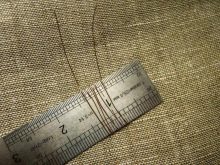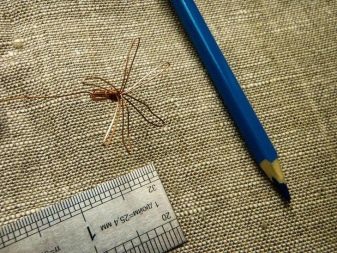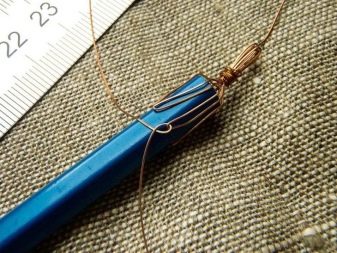Of the many hand-made jewelry, wire chains are quite expensive and aesthetically pleasing. Despite the fact that the manufacture of the product requires a long and painstaking work, the final result is really worth it.

Tools and materials
Most often, chains are created from copper wirebut there is an alternative: brass, steel or silver thread. The main thing is not to choose too thick materials, as this can complicate the weaving process. In addition, if further work involves the use of beads, it will be necessary to ensure that the opening of the decorative element matches the thickness of the thread.
To make the metal used more flexible and ductile, some craftsmen pre-burn it using a conventional gas burner. The tools used are determined depending on the complexity of the jewelry being made. Some of them are created simply with the help of hands, others require a crochet hook, and some will definitely have to be soldered.
Often bolts, a vice, files and pliers are used for work.


Manufacturing instruction
It’s quite simple to make a chain of wire with your own hands using a technique called "Weaving the Vikings." Since this method does not require additional soldering of metal, it will take only a long piece of thin wire, preferably copper, a pencil, scissors and a ruler.
Before weaving the decoration, it will be necessary to prepare the base. For this, a fragment of a metal thread about 40 centimeters long is twisted six times around the ruler. After removing the base, it is necessary to fix the resulting loops, wrapping around them the free end of the wire.



If everything is done correctly, then the workpiece will be carefully opened with a "flower", and then put on the blunt tip of a pencil, bending the "petals" from all sides. Next, a new wire piece already 70 centimeters long is cut for work. Leaving the small end free, you need to create a loop around one of the "petals". The next loop is wrapped indented by one "petal" to the right, and movements should be made from top to bottom. Having created four more loops in the same way, it will turn out to return to the first “petal”.




Then we can proceed to the same formation of a new series. To do this, the next loop is created so that it clings to the first loop of an already completed row. Work on this scheme continues until there is no tip left from the entire wire, the length of which will be from 10 to 12 centimeters. Since at this stage the decoration is not yet ready, the material needs to be increased. Having cut off a new long wire thread, it must be brought under one of the vertical rows of loops.
When weaving reaches the connection point, the new wire begins to be used along with the old one. Having finished the row to the end, at the same time reaching the new thread, the last one must be brought up to the left of the loop, and the old one should be hooked to the right of the loop and taken down. Over the next few laps the old wire should be used together with the loop of the previous row, and then cut. When the weaving is sufficient, the structure can be removed from the pencil base. By pulling slightly at the free ends, the workpiece can be transformed into a beautiful chain.




At home, the same "Viking weaving" can be created with a knitting hook. When preparing tools and materials, it is important to ensure that the thickness of the hook matches the thickness of the gutter. If a novice master knows how to knit, then working with wire will not present any difficulties for him. Everything is done similarly to the first method, but when the first loop is ready, then you will need to hook the next one and pull it through the previous one.
The loop extends to the required length, after which the process is repeated as many times as needed to obtain a finished workpiece of the required size.

Very simple wire chain is created from individual rings. First, a long metal thread is cut into several fragments, the length of which does not exceed 5 centimeters. Bending the ends, it is necessary to strongly press them with the flat part of the pliers. If everything is done correctly, then a piece with bent round tips should form. Each fragment of the gimlet is taken with pliers at the midpoint, after which it is bent in half so that one loop is pressed against the other. It is important that the tool is always centered during operation.

Creating any decoration, we must not forget about the clasps. To do this, at the end of the wire you will have to make small loops in which hooks of a suitable size will be sold.
The thickness of this hardware should be determined depending on the thickness of the metal thread.


Recommendations
For weaving a wire chain, you can use one of the traditional methods of whipping. For example, it can be an anchor method, which requires connecting the links to each other at an angle of 90 degrees. Separate links in this case should have an oval shape. If a crossbar is added between the individual links, then weaving can be called a “sea anchor”.

On the technique of weaving "Viking" to create a chain of wire with your own hands, see below.










